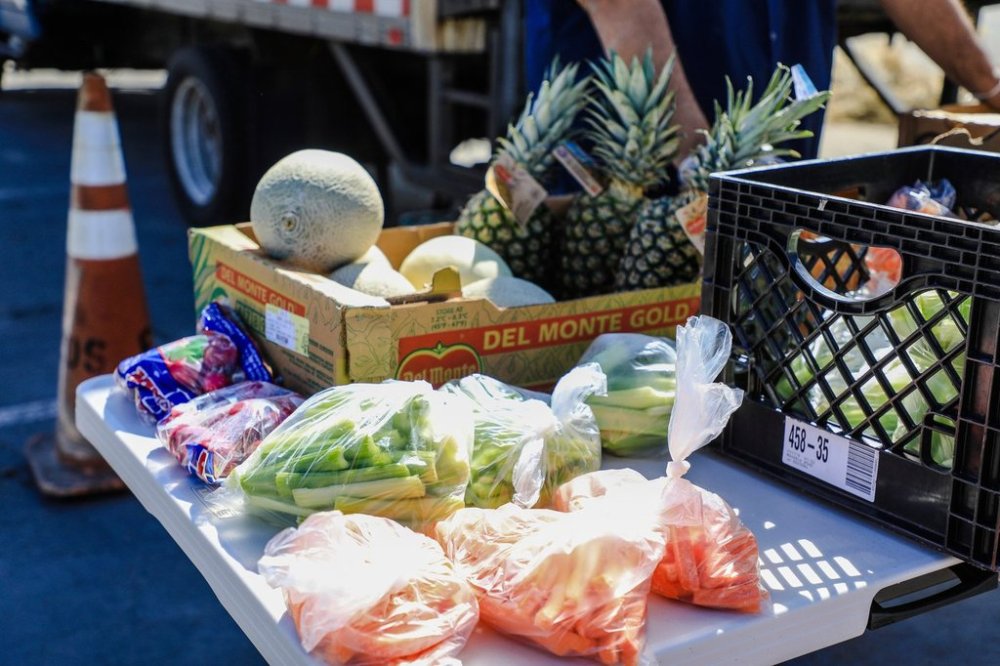World
Colorado Voters Face Crucial Decision on School Meals Funding

Colorado voters will determine the future of the state’s free school meals program on November 4, 2024, when they decide on two significant ballot measures aimed at securing its financial viability. The “Healthy School Meals for All” initiative, which provides free breakfast and lunch to all public school students, is at a crossroads as it confronts rising costs and funding challenges.
The program, approved by voters in 2022, was initially expected to cost around $115 million in its first year. However, participation rates exceeded projections, leading to an actual expenditure of approximately $162 million, according to a report from the Colorado Department of Education. The proposed measures, Proposition MM and Proposition LL, seek to address these financial pressures primarily through tax adjustments targeting high-income earners.
Proposition MM aims to enhance funding for the free meals program by adjusting tax deductions for individuals earning $300,000 or more annually. This change is projected to impact about 194,000 taxpayers in 2026, with average tax increases estimated at $385 for single filers and $570 for joint filers, based on analysis from the Colorado General Assembly’s nonpartisan legislative research office.
Meanwhile, Proposition LL would allow the “Healthy School Meals for All” program to utilize approximately $12 million in tax revenue that has already been collected but is currently scheduled for refunds to taxpayers. This situation arises from Colorado’s Taxpayer Bill of Rights (TABOR), which mandates refunds of surplus tax revenues unless voters permit the state to retain the funds. Should both propositions pass, the meals program could gain access to an additional $65 million for the remainder of the 2025-26 academic year and around $119 million for the subsequent year.
In the 2022 election, the original proposition for “Healthy School Meals for All” garnered support from roughly 57% of voters. It received backing from major urban counties, including Denver, while facing opposition in more conservative regions. The upcoming measures are anticipated to reflect similar voting patterns, with the strongest resistance likely to emerge from traditionally Republican areas.
Voter sentiment on tax-related propositions has shown a clear divide along party lines. In the November 2023 election, for instance, approximately 59% of voters rejected Proposition HH, which aimed to reduce TABOR tax refunds for lower property taxes. Conversely, nearly 68% approved Proposition II, allowing the retention of $23.7 million in excess tobacco and nicotine taxes for a universal preschool program.
Polls will close statewide at 19:00 local time on November 4, which is 21:00 ET. As of October 3, approximately 4.5 million registered voters were eligible to participate in the election. The breakdown shows that about 25% were registered Democrats, 22% Republicans, and over 50% were unaffiliated with any party. Elections in Colorado are predominantly conducted by mail, and as of the last report, nearly 355,000 ballots had already been cast ahead of Election Day.
As the state prepares for the upcoming vote, the stakes are high for the future of the free meals program. The outcomes of Propositions LL and MM will not only affect school children across Colorado but will also serve as an indicator of broader voter attitudes toward tax policies in the state.
-

 Science3 months ago
Science3 months agoToyoake City Proposes Daily Two-Hour Smartphone Use Limit
-

 Top Stories3 months ago
Top Stories3 months agoPedestrian Fatally Injured in Esquimalt Collision on August 14
-

 Health3 months ago
Health3 months agoB.C. Review Reveals Urgent Need for Rare-Disease Drug Reforms
-

 Technology3 months ago
Technology3 months agoDark Adventure Game “Bye Sweet Carole” Set for October Release
-

 World3 months ago
World3 months agoJimmy Lai’s Defense Challenges Charges Under National Security Law
-

 Lifestyle3 months ago
Lifestyle3 months agoVictoria’s Pop-Up Shop Shines Light on B.C.’s Wolf Cull
-

 Technology3 months ago
Technology3 months agoKonami Revives Iconic Metal Gear Solid Delta Ahead of Release
-

 Technology3 months ago
Technology3 months agoApple Expands Self-Service Repair Program to Canada
-

 Technology3 months ago
Technology3 months agoSnapmaker U1 Color 3D Printer Redefines Speed and Sustainability
-

 Technology3 months ago
Technology3 months agoAION Folding Knife: Redefining EDC Design with Premium Materials
-

 Business3 months ago
Business3 months agoGordon Murray Automotive Unveils S1 LM and Le Mans GTR at Monterey
-

 Technology3 months ago
Technology3 months agoSolve Today’s Wordle Challenge: Hints and Answer for August 19









